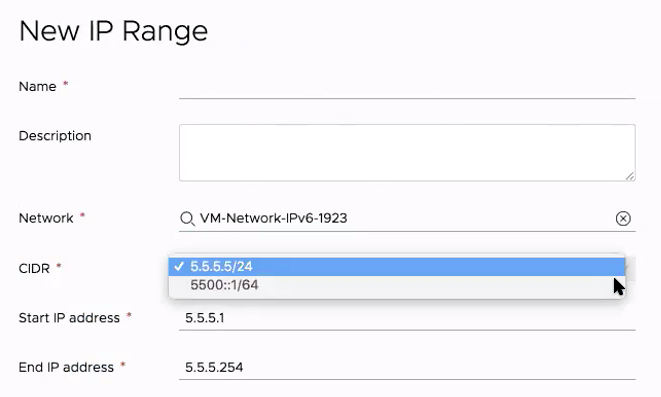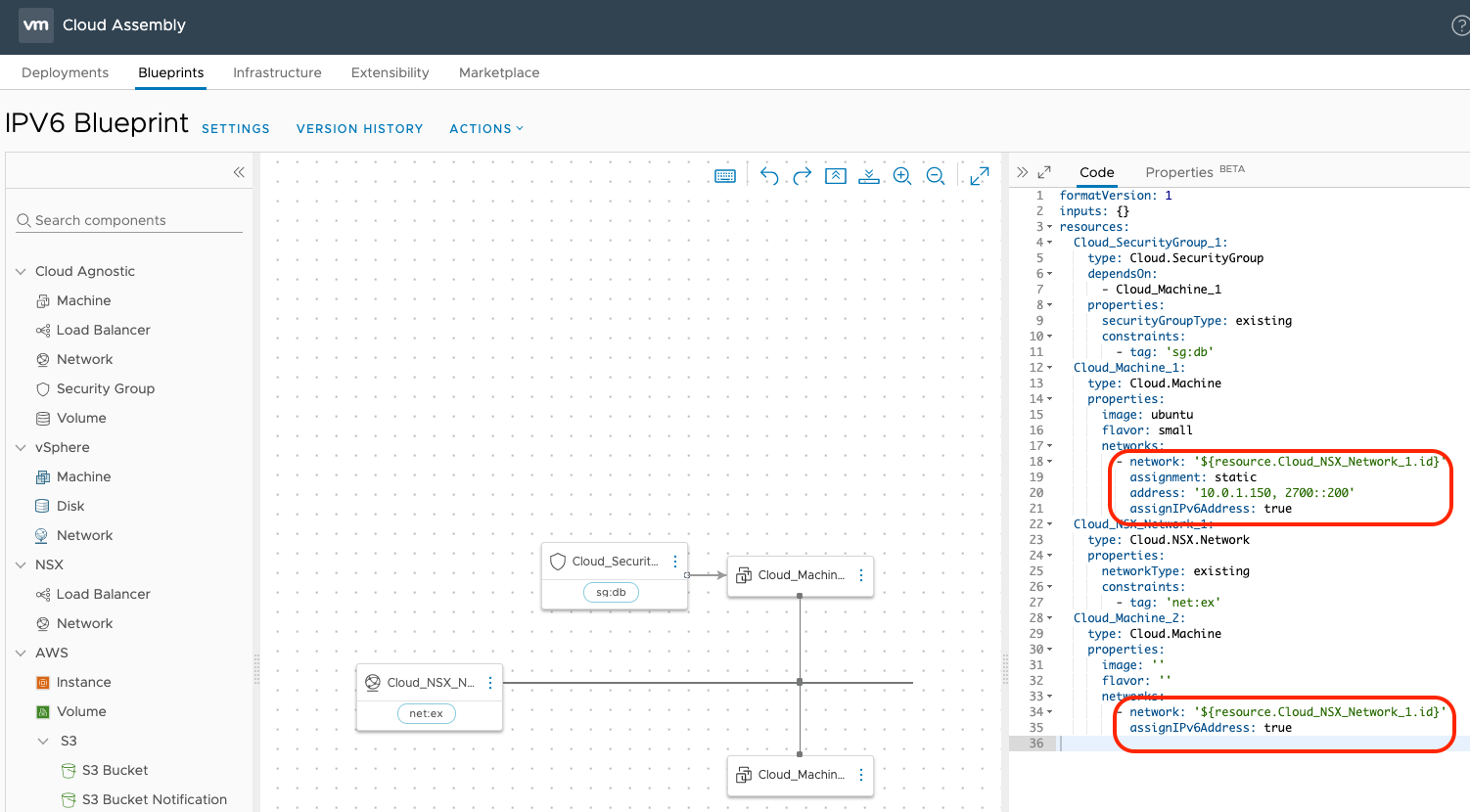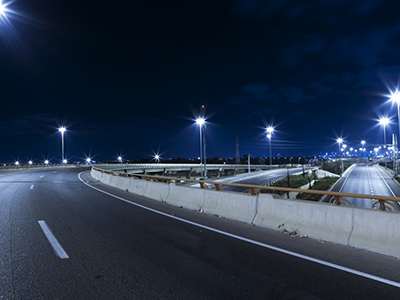Cloud Assembly now supports IPv6 for vSphere workloads in a dual stack configuration. You will have the ability to define an IPv6 CIDR, gateway, and DNS servers just as you can with IPv4. In the example, I have added IPv6 details to my logical switch for later deployment use.

Additionally IPv6 IP ranges can be configured for IP assignment. Allocated IPv6 IPs will be tracked just as they are with IPv4. Notice in the screenshot you the ability to choose the IPv4 or IPv6 CIDR when defining the range. CIDRs must be assigned to the selected switch before it will be visible as a Network selection in the New IP Range window.

Adding a network with IPv6 configured to a network profile is identical to an IPv4 configuration. The switch with a dual stack IPv4 and IPv6 configuration and associated IP ranges is added in the Networks tab. A deployed vSphere VM will be assigned IPv4 and IPv6 addresses from the IP pool assigned to the switch in the chosen network profile.

Blueprints control how the IPv4 and IPv6 addresses are assigned during deployment. In the example, I’m assigning static and dynamic IP addresses, I could remove the line address: 10.0.1.150, 2700::200 and Cloud Assembly would assign static addresses during deployment. If the line assignment: static is not present, dynamic addresses would be used during deployment.

IPv6 support is available now with vRealize Automation Cloud and the forthcoming vRealize Automation 8. If you’d like to learn more about networking in Cloud Assembly, check out my other blogs: Network Automation with Cloud Assembly and NSX









